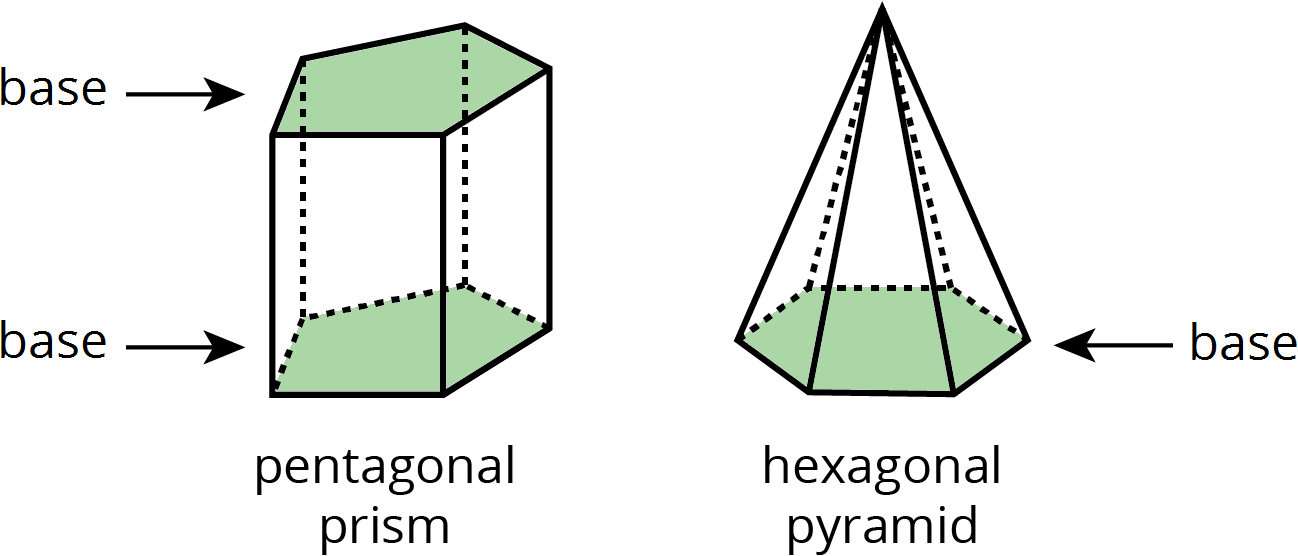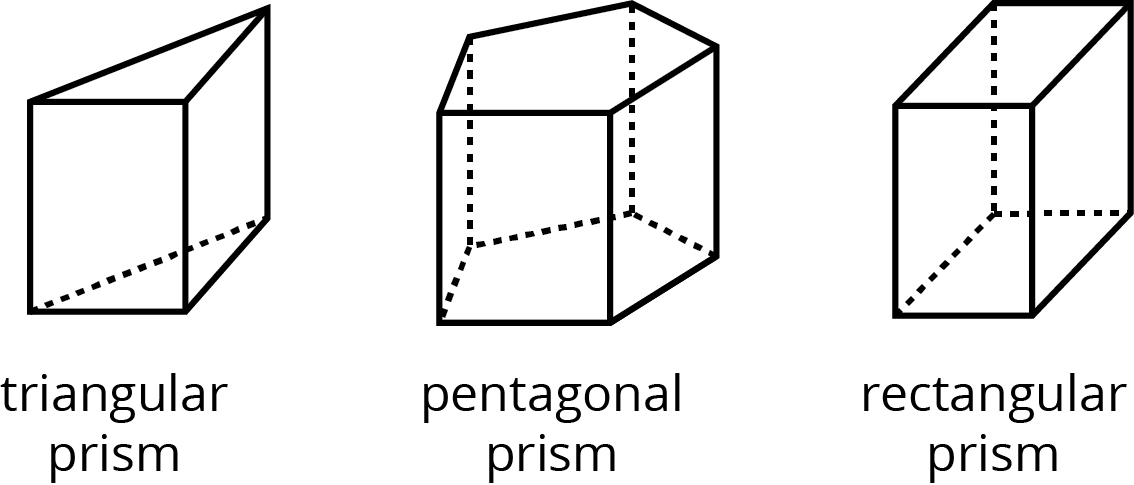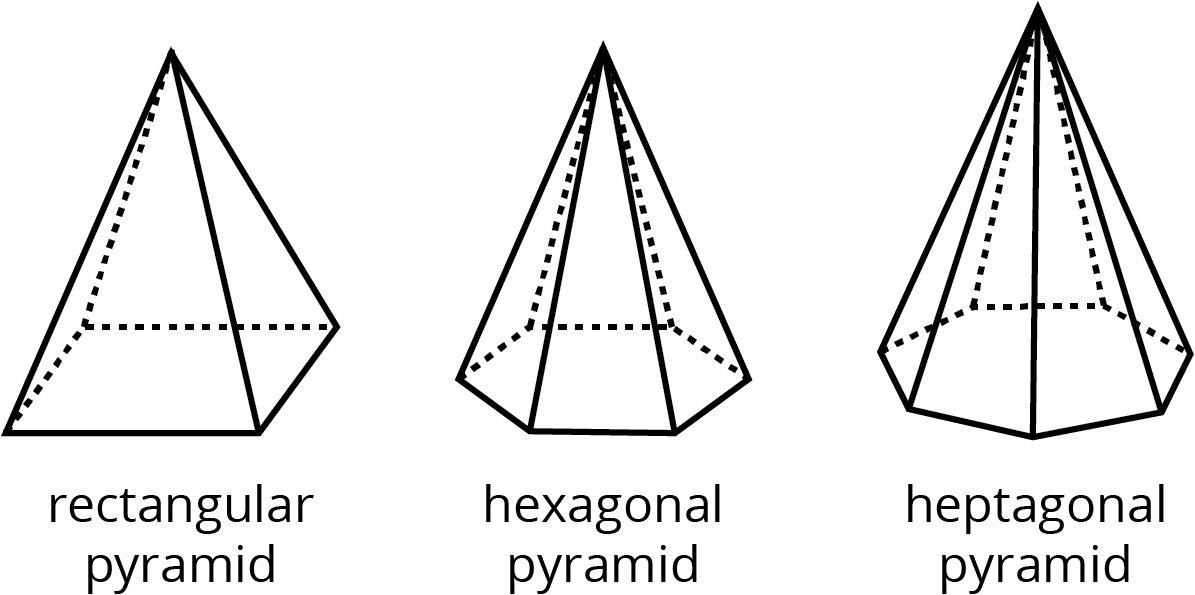Lesson 11
Slicing Solids
Lesson Narrative
This lesson introduces the idea that slicing a three-dimensional figure with a plane results in a two-dimensional cross section. Slicing a fruit or vegetable, dipping the exposed face in paint, and stamping it on a paper helps students focus on the two-dimensional face that is created by the slice. Given two-dimensional representations of how objects are sliced, students practice visualizing the three-dimensional figures and the resulting cross sections.
Learning Goals
Teacher Facing
- Categorize images of planes intersecting pyramids and prisms, and describe (orally) the categories.
- Comprehend that the term “cross section” (in spoken and written language) refers to the two-dimensional face that results from slicing a three-dimensional figure.
- Describe, compare, and contrast (orally and in writing) different cross sections that could result from slicing the same pyramid or prism.
Student Facing
Let's see what shapes you get when you slice a three-dimensional object.
Required Materials
Required Preparation
As part of the lesson, the teacher will slice a fruit or vegetable to show a cross section. Recommended are apples, potatoes, or carrots. Tempera or acrylic paint can also be used to stamp the cross section onto paper.
You will need the Cross Section Card Sort blackline master for this lesson. Prepare 1 copy per 3 students, cut the slips, and put each set in an envelope. These slips can be reused from one class to the next. If possible, copy each complete set of cards on a different color of paper, so that a stray card can quickly be put back.
Learning Targets
Student Facing
- I can explain that when a three dimensional figure is sliced it creates a face that is two dimensional.
- I can picture different cross sections of prisms and pyramids.
Glossary Entries
-
base (of a prism or pyramid)
The word base can also refer to a face of a polyhedron.
A prism has two identical bases that are parallel. A pyramid has one base.
A prism or pyramid is named for the shape of its base.

-
cross section
A cross section is the new face you see when you slice through a three-dimensional figure.
For example, if you slice a rectangular pyramid parallel to the base, you get a smaller rectangle as the cross section.
-
prism
A prism is a type of polyhedron that has two bases that are identical copies of each other. The bases are connected by rectangles or parallelograms.
Here are some drawings of prisms.

-
pyramid
A pyramid is a type of polyhedron that has one base. All the other faces are triangles, and they all meet at a single vertex.
Here are some drawings of pyramids.

Print Formatted Materials
For access, consult one of our IM Certified Partners.
Additional Resources
| Google Slides | For access, consult one of our IM Certified Partners. |
|
| PowerPoint Slides | For access, consult one of our IM Certified Partners. |